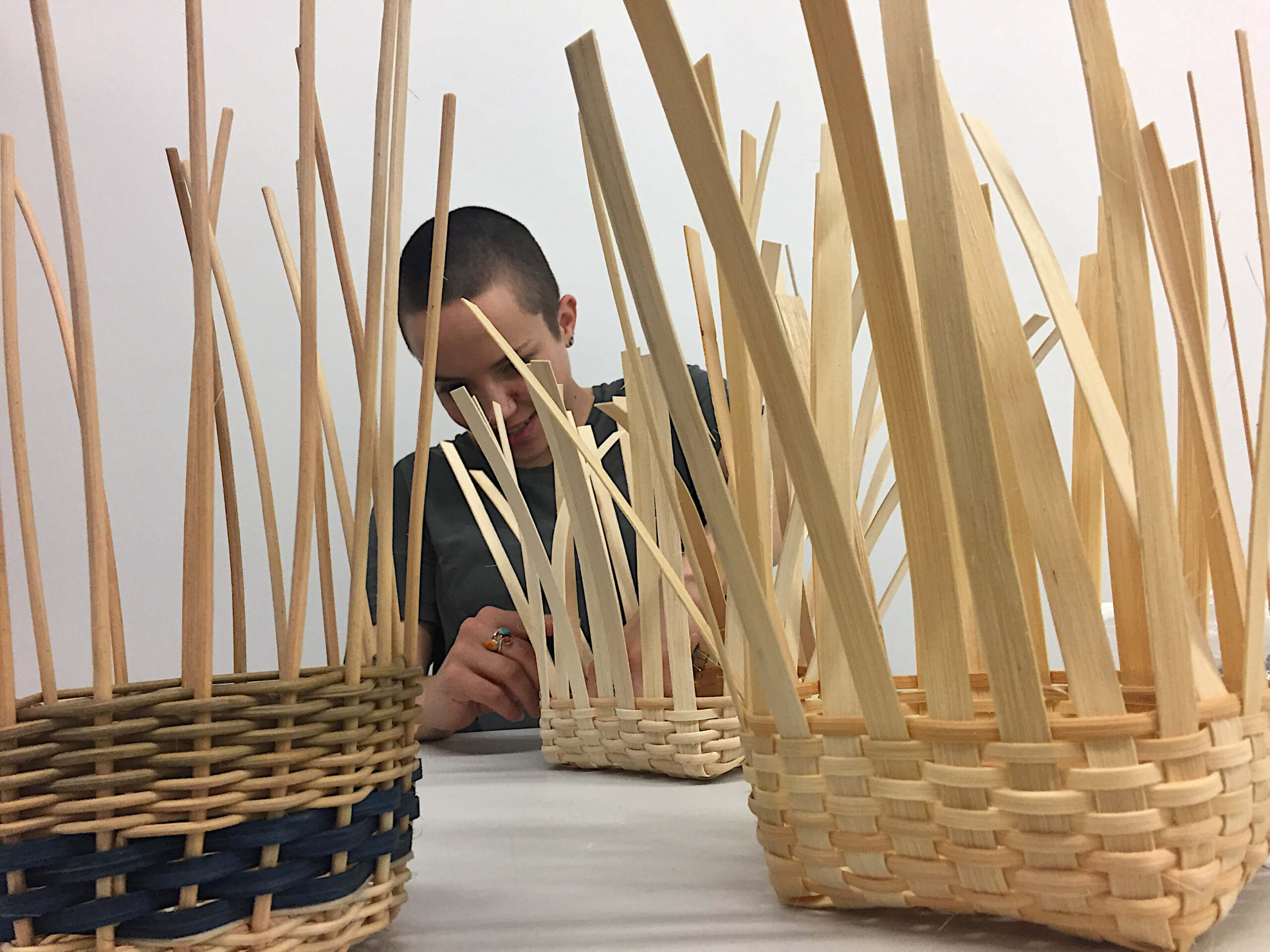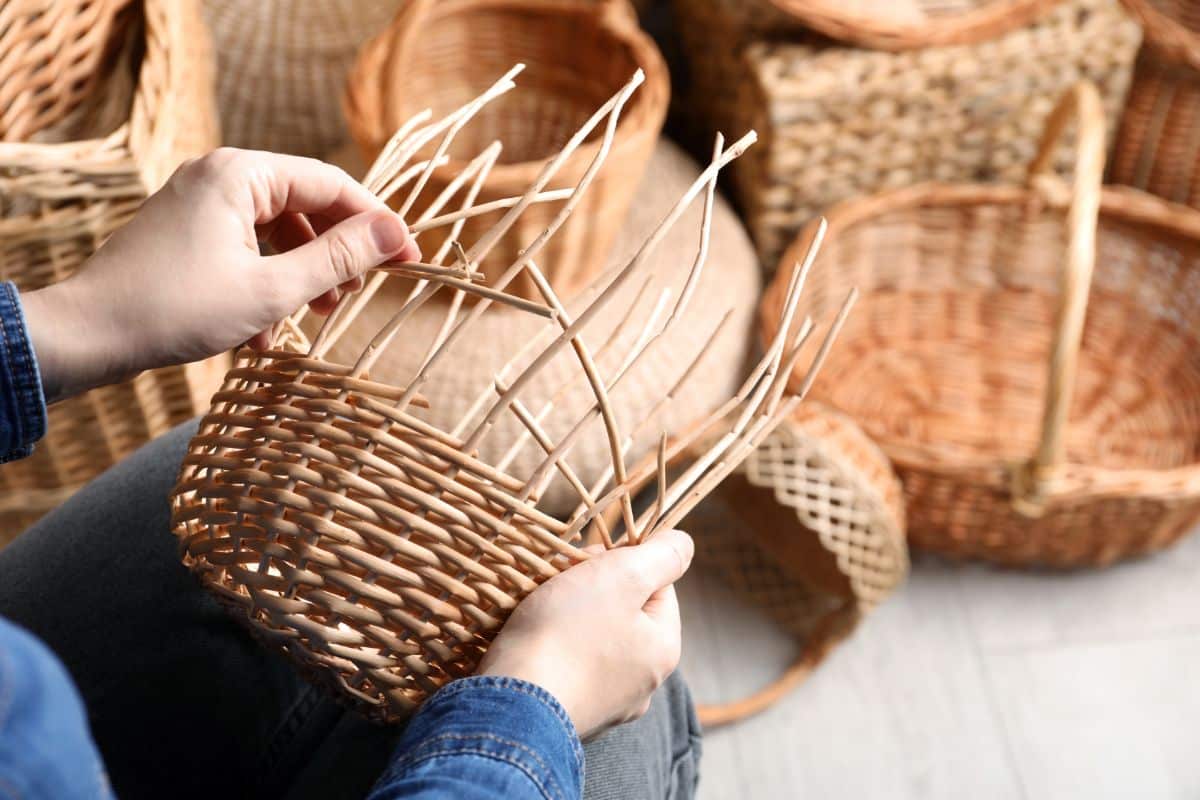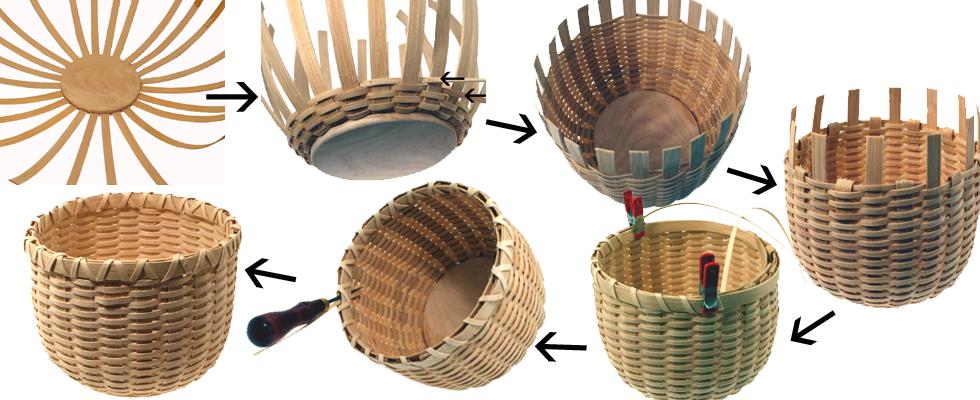Basket weaving is an ancient craft that has been practiced for thousands of years. It has its roots in various cultures around the world, from Native American tribes to African communities. The art of basket weaving involves creating functional and decorative baskets using a variety of materials and techniques. In addition to being a creative outlet, basket weaving offers numerous benefits as a hobby.
One of the main advantages of basket weaving is its therapeutic nature. As someone who has always been drawn to hands-on activities, I found that engaging in this craft provided me with a sense of calm and relaxation. The repetitive motions required in basket weaving can be meditative, allowing you to focus on the present moment and let go of any stress or worries.
Key Takeaways
- Basket weaving is a timeless craft that has been practiced for centuries.
- To get started, you will need basic materials such as reeds, cane, or willow, as well as tools like scissors and a weaving needle.
- Choosing the right type of weaving material is important for achieving the desired look and durability of your basket.
- Basic basket weaving techniques include creating a simple base, adding sides and handles, and experimenting with different weaving patterns.
- To finish your basket, you can add decorative accents and trim and shape it to your liking. Proper maintenance and preservation will ensure your basket lasts for years to come.
Materials and Tools Needed for Basket Weaving
To get started with basket weaving, you will need a few essential materials and tools. The choice of materials depends on your personal preference and the type of baskets you want to create. Commonly used materials include reed, cane, willow, and even recycled newspaper or fabric strips.
In terms of tools, some basic ones are necessary for most projects. These include scissors for cutting the material to size, pliers for bending or shaping wire handles if desired, an awl for poking holes or manipulating the material during construction.
Choosing the Right Type of Weaving Material
When selecting your weaving material, there are several factors to consider: durability, flexibility/color options available (if desired), availability/costs involved (some materials may be more expensive than others). Each type has its own unique characteristics that can affect both the appearance and functionality of your finished basket.
Reed is one popular choice due to its strength and flexibility; it comes in various sizes which allows for different design possibilities depending on what you’re looking for aesthetically speaking! Cane is another commonly used material known for its durability; it’s often used in traditional basketry due to its ability to withstand heavy use.
Willow, on the other hand, offers a more natural and rustic look. It is known for its flexibility and can be easily manipulated into intricate designs. The color of willow can vary depending on the species, ranging from pale yellow to dark brown.
Basic Basket Weaving Techniques for Beginners
| Technique | Description |
|---|---|
| Coiling | A technique where a long, pliable material is wrapped around a center point to create a spiral pattern. |
| Twining | A technique where two or more flexible materials are twisted together to create a strong, durable weave. |
| Plaiting | A technique where flat materials are woven over and under each other to create a basket with a checkerboard pattern. |
| Rib-style | A technique where thin, flexible materials are woven around a series of ribs to create a basket with a structured shape. |
| Random weave | A technique where materials of varying sizes and shapes are woven together in a free-form pattern to create a unique basket. |
As a beginner in basket weaving, it’s important to start with some basic techniques that will lay the foundation for more complex projects in the future. Three common techniques are over-under weaving, twining, and coiling.
Over-under weaving involves passing strands of material over and under each other in a repetitive pattern. This technique creates a sturdy structure and is often used for creating basket bases or sides.
Twining involves using two weavers (strands of material) that are twisted around each other as they go around the spokes (uprights). This technique creates a unique pattern and is commonly used for creating decorative elements or adding texture to baskets.
Coiling is another technique where one continuous strand of material is wrapped around itself in a spiral fashion. This technique allows you to create baskets with different shapes and sizes by varying the tension or direction of your coils.
Creating a Simple Basket Base
To create a basic basket base using the over-under weaving technique, follow these steps:
1. Start by cutting several strands of your chosen weaving material slightly longer than you want your base diameter to be.
2. Arrange these strands parallel to each other on your work surface.
3. Take another strand of material (weaver) and weave it over one strand from left to right.
4. Then weave it under the next strand from right to left.
5.Continue this pattern until you have woven all strands together tightly enough that they form a solid base.
6.Trim any excess length from your weavers once you reach desired size/diameter before moving onto next step!
Adding Sides and Handles to Your Basket
Once you have created a sturdy base for your basket, it’s time to add sides and handles. There are various techniques you can use depending on the design you want to achieve.
For adding sides, one common technique is to continue the over-under weaving pattern from the base upwards. This creates a seamless transition between the base and sides of your basket.
To add handles, you can either weave them directly into the sides of your basket or attach them separately using wire or other fastening methods. It’s important to ensure that handles are securely attached for stability and symmetry.
Experimenting with Different Weaving Patterns
Once you have mastered the basic techniques, it’s time to get creative and experiment with different weaving patterns. This is where your personal style can shine through!
Some popular weaving patterns include checkerboard, diagonal lines, or even intricate geometric designs. You can achieve these patterns by varying the placement of your weavers or using different colors/materials for added visual interest.
When experimenting with different patterns, don’t be afraid to make mistakes! Some of my most unique designs came from happy accidents that I embraced rather than trying to fix.
Adding Decorative Accents to Your Basket
To take your basket weaving skills up a notch, consider adding decorative accents such as beads, feathers, or ribbon. These embellishments can enhance the overall look of your basket and make it truly one-of-a-kind.
One technique for incorporating accents is by threading beads onto some of your weavers before starting a new row or section in your basket design. This adds texture and visual interest as well as personalizes each piece!
Another idea is attaching feathers along the rim or handle area using wire wrapping techniques; this creates movement when handled which adds an extra touch!
Finishing Touches: Trimming and Shaping Your Basket
After completing all sections of your basket, it’s time to give it a polished finish. This involves trimming any excess material and shaping the basket into its final form.
Using sharp scissors or a craft knife, carefully trim any stray ends or uneven edges to create clean lines. Be sure to take your time and make small cuts as needed; you can always remove more material later if necessary!
To shape your basket, gently manipulate the sides and base using your hands. You can press down on certain areas to create a flatter shape or pull up on others for a more rounded appearance.
Tips for Maintaining and Preserving Your Basket
Once you have completed your masterpiece, it’s important to know how to properly care for and preserve it. Here are some tips:
– Avoid exposing your basket to direct sunlight for extended periods as this can cause fading or discoloration.
– Keep your basket away from excessive moisture or humidity as this can weaken the materials over time.
– If necessary, gently dust off any dirt or debris using a soft brush or cloth.
– Store your basket in a cool, dry place when not in use; consider wrapping it in acid-free tissue paper for added protection.
By following these best practices, you can ensure that your baskets remain beautiful and functional for years to come!
Exploring Advanced Basket Weaving Techniques and Projects
Once you have mastered the basic techniques of basket weaving, there are endless possibilities for exploring advanced techniques and projects. Here are some examples:
Twill weaving is an advanced technique that involves weaving weavers over two spokes at a time instead of one. This creates diagonal patterns that add depth and complexity to your baskets.
Double-walled baskets are another challenging project that requires weaving two layers simultaneously. This creates a sturdy structure with an interesting visual effect.
Other advanced techniques include plaiting (weaving strands together in an interlocking pattern), twill plaiting (combining twill weaving with plaiting), and triple twining (using three weavers instead of two).
When taking on advanced projects, it’s important to be patient and take your time. Don’t be discouraged if it takes a few tries to get the hang of a new technique; practice makes perfect!
In conclusion, basket weaving is a rewarding hobby that offers both creative expression and therapeutic benefits. By learning the basic techniques and experimenting with different materials and patterns, you can create unique baskets that reflect your personal style.
Remember to start with simple projects and gradually challenge yourself with more advanced techniques as you gain confidence. With practice, patience, and a little bit of creativity, you can become an accomplished basket weaver.
So why not give basket weaving a try? You might just discover a new passion that brings joy and fulfillment into your life. Happy weaving!
FAQs
What is basket weaving?
Basket weaving is the process of creating baskets using natural materials such as grasses, reeds, and vines. It is an ancient craft that has been practiced for thousands of years.
What materials are used in basket weaving?
Basket weaving materials can vary depending on the region and the type of basket being made. Common materials include grasses, reeds, vines, bark, and even animal hair.
What tools are needed for basket weaving?
The tools needed for basket weaving include a pair of scissors or pruning shears, a needle-nose pliers, a bodkin (a blunt needle used for weaving), and a basketry mold (a form used to shape the basket).
What are the basic steps in basket weaving?
The basic steps in basket weaving include selecting the materials, preparing the materials by soaking or stripping them, weaving the base of the basket, adding the sides, and finishing the rim.
What are some common types of baskets?
Common types of baskets include coiled baskets, twined baskets, and plaited baskets. Each type of basket has its own unique weaving technique and style.
Is basket weaving difficult?
Basket weaving can be challenging for beginners, but with practice and patience, anyone can learn to create beautiful baskets. It is a relaxing and rewarding craft that can be enjoyed by people of all ages.
Where can I learn more about basket weaving?
There are many resources available for learning basket weaving, including books, online tutorials, and classes at local craft stores or community centers. Joining a basket weaving group or guild can also be a great way to learn from experienced weavers and connect with other basket makers.
Originally posted 2024-01-15 04:15:17.





